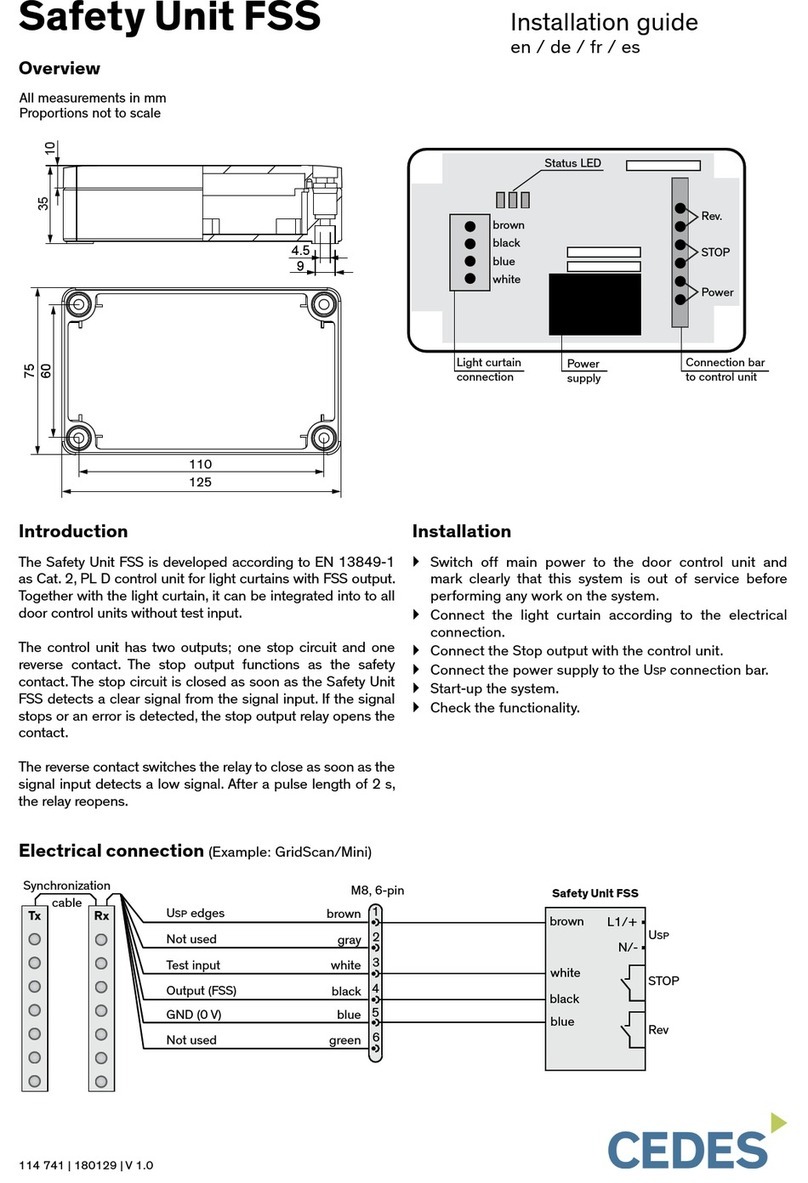© CEDES | V 1.0 3
2. Safety information
IMPORTANT!
READ BEFORE INSTALLATION!
The Universal Power Supply Plus (UPS Plus ) was developed
and manufactured using state-of-the-art systems and
technologies.
To ensure safe conditions:
Read all enclosed instructions and information
Follow the instructions given in this manual carefully
Observe all warnings included in the documentation
and attached to the UPS Plus
Keep the instruction manual on site
When the UPS Plus and a MiniMax or cegard/Mini light
curtain are used as a replacement for mechanical safety
edges, it is the responsibility of the installer to ensure
that on completion, the installation complies with all the
relevant state codes, local codes and regulations that
pertain to infrared and photoelectric door protection
devices!
The UPS Plus should only be installed by authorized and
fully trained personnel!
In Canada, particular attention should be given to clauses
2.13.5.1 and 2.13.5.2 CAN/CSA-B44-B89!
In the USA, all connections requiring 42 Volts or greater
must be wired through Greenfield tubing and fittings.
Disconnect power before opening the control unit to
prevent electrical shock. Do not remove any inside covers
or fuse caps.
2.1 Non-intended use
The UPS Plus must not be used for:
• Protection of dangerous machines
• Equipment in explosive atmospheres
• Equipment in radioactive environments
Use only specific and approved safety devices for such
applications, otherwise serious injury or death or damage
to property may occur!
3. Symbols, safety messages
3.1 Safety messages categories
Warning of serious health risks
WARNING
Serious health risks
Highlights critical information for the safe use
of the sensor. Disregarding these warnings
can result in serious injury or death.
Follow the measures highlighted by the
triangle-shaped arrows
Consult the safety information in Chapter
2 of this manual
Caution of possible health risk
CAUTION
Possible health risks
Highlights critical information for the safe
use of the sensor. Disregarding these
warnings can result in injury.
Follow the measures highlighted by the
triangle-shaped arrows
Consult the safety information in Chapter
2 of this manual
Notice of damage risk
NOTICE
Risk of damage
Disregarding these notices can lead to
damage to the sensor, the door controller
and/or other devices.
Follow the measures highlighted by the
triangle-shaped arrows
Symbol Meaning
Single instruction or measures in no
particular order
1.
2.
3.
Sequenced instructions
• List, in no order of importance
àReference to a chapter, illustration or
table within this document
Important Important information for the correct
use of the sensor





























